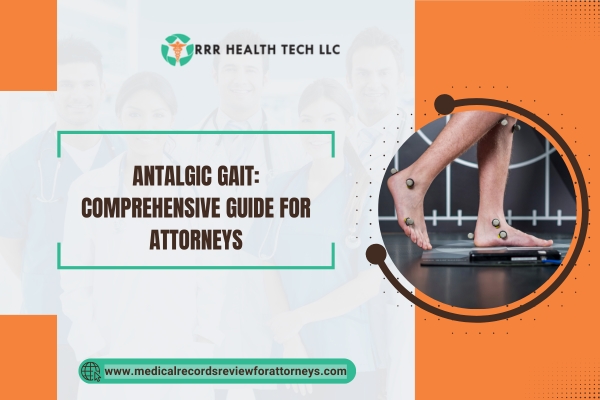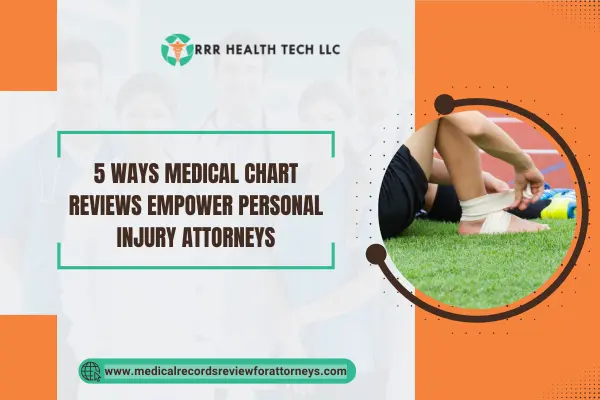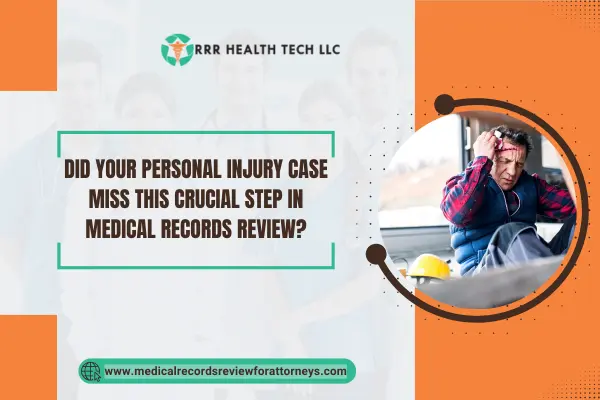
Introduction
One relieves their pain while walking by adopting antalgic gait, a type of limping. The factors causing this condition include past injuries, osteoarthritis, or even neurological factors. Actually, for a personal injury attorney, for malpractice cases, antalgic gait should be the one thing they should comprehend as it tends to change the entire focus of the case. As the name suggests, the aim of this article is to assess the medical records which tend to support legal claims, and discuss antalgic gait in its causes and symptoms along with the legal consideration it has.
1. Overview of Antalgic Gait
Definition and Characteristics
The affected side has a somewhat decreased stance phase, ending up in a limp, this limp is known as the antalgic gait. The limp is caused by the body’s attempt at pain alleviation during movement. However, most people suffering with antalgic gait generally possess the following characteristics:
• Physical disability in form of a limp.
• Reduced weight distribution on the affected limb.
• Weight distribution shift away from the affected side.
Causes of Antalgic Gait
Antalgic gait can result from various conditions, including:
- Musculoskeletal Injuries: Pain after a limp can occur from sprains, fractures or tendon damage.
- Arthritis: When joint pain from osteoarthritis or rheumatoid arthritis occurs, that causes a change in gait.
- Neurological Disorders: Such diseases as stroke or multiple sclerosis can interfere with musculature, control and coordination.
- Infections: Inflammatory foci that involve bones and joints lead also to a painful limb and limping.
2. Symptoms and Diagnosis
Common Symptoms
Individuals with antalgic gait may experience:
• Pain localized to the limb in question
• Heat, swelling, or tenderness in the joints
• Fixation of motion about one or more joints
• Exhaustion secondary to inefficient compensatory movements
Diagnostic Procedures
Diagnosis typically involves:
• Physical Examination: “Walk and see” along with stand and move and pain evaluation are performed.
• Imaging Tests: X rays, MRIs or CT scans may be utilized in determination of the condition.
• Gait Analysis: Special techniques may be useful in understanding the biomechanics of walking.
3. Treatment Options
Non-Surgical Treatments
For many individuals, non-surgical treatments can alleviate symptoms, including:
- Physical Therapy: A special complex to strengthen and develop the range of motion passions.
- Pain Management: Non-steroidal anti-inflammatory drugs or corticosteroids are effective in pain and inflammatory control.
- Assistive Devices: Crutch or brace may help in walking and reduce weighing on the affected limb.
Surgical Interventions
In cases where conservative treatments fail, surgical options may be considered, such as:
• Arthroscopy: A new minimally invasive procedure used to repair damaged ligaments and joints instead of open surgery.
• Joint Replacement: particular surgeries for arthritis are necessary due to the incapacity of the disease to improve any further.
4. Legal Implications of Antalgic Gait
Medical Malpractice Claims
Antalgic gait is also known to play an important role in medical negligence claims, particularly where the healthcare provider who fails to appreciate the need for a diagnosis or treatment of the cause. The legal aspects are:
- Failure to Diagnose: A negligence in which the practitioner fails to notice certain signs of injury or pathological conditions leading to more injury or disability.
- Inadequate Treatment: This is where there is a gap between the diagnosed condition and the treatment given and which causes the patient to deteriorate further.
Personal Injury Cases
In personal injury cases, antalgic gait can be a starting point to be able to illustrate the extent of a client’s injury. It is required of the lawyers to show how the injury has affected the mobility, the expected standard of living, and work performance of the client.
Importance of Documentation
Accurate documentation is crucial in legal cases involving antalgic gait. Medical records must clearly outline:
- The diagnosis and treatment plan
- Progress notes detailing the patient’s response to treatment
- Any referrals to specialists or additional diagnostic tests
5. The Role of Medical Records Review in Legal Cases
Importance of Accurate Documentation
There is a need for accuracy on key details of the record of a patient who presents with an antalgic gait as this accumulates the details of her/his encounters with medical personnel, encounters that influenced decisions on management and the resolution of signs and symptoms. Medical records that are inaccurate or non-existent can alter the disposition of a case, so for a case to be lawfully endorsed, it should be based on factual and sound evidence.
How Medical Records Review Supports Attorneys
Medical records review companies assist attorneys by:
• Conduct Medical Record Review: Determining if there are any contradictions or insufficiencies that could hinder the case’s success.
• Identifying Care Level Provided: Basing the remark on professional and clinical experts who can testify concerning the ratio of care offered.
• Collecting Evidence: Assembling history of illnesses, x-ray examinations and surgical framework in order to assist in the case.
By leveraging these services, attorneys can enhance their case strategies and improve their chances of favorable outcomes for their clients.
6. Case Studies
Case Study 1
Overview: A 35-year-old woman developed antalgic gait following a car accident that resulted in a fractured ankle. Despite initial treatment, her pain persisted, leading to a limp that affected her daily activities.
Challenges: The major concern is to satisfy the burden of proof that the healthcare providers did not properly provide enough attention to the root injury that was also a reason for unfavorable posture and pain.
Solutions: The medical records custodians were instrumental helping the attorney as they crowded in the treatment notes and imaging history. Further research showed that the first diagnosis did deny soft tissue pathologies which went without addressing in the invasive plan.
Case Study 2
Overview: A healthcare provider was named in an action by a 50 year old with a knee suffered from osteoarthritis knee gait who claimed that he was not given any suitable options for cushioning the pain.
Challenges: The standard of care in such situations would require an attorney to prove that the patient was not treated as required and the disease in question interfered more with the proper movements and standard of living.
Solutions: The attorney engaged a medical records review company to make the case around the patient’s history of treatment and deficits in referrals to specialists. This evidence was important in proving dissension.
7. Conclusion
A legal practitioner dealing with personal injury and medical malpractice cases should understand what antalgic gait means. Appreciating the magnitudes of this condition and using medical records review services, lawyers are able to refine their case plans and make better results for their clients. It is also necessary to know the accessible means of treating and the prevailing legal principles in order to excel in this field.


